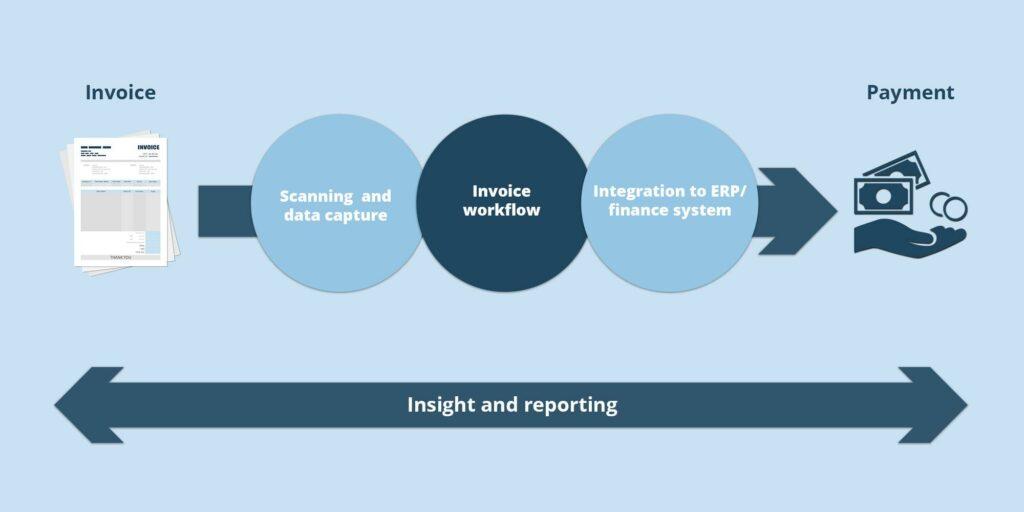In my opinion, it is always important that business leaders constantly seek to optimize administrative processes and tasks. And especially now, it is more important than ever. Most finance professionals have heard about digitization and automation of the accounts payable process. Many of the finance departments, that are not yet digital within this area, have accounts payable automation (AP automation) on their list of upcoming projects. Hence, I believe that most have heard about the advantages: Vi must save time, we must work more efficiently, and we must increase productivity. In this blog, I will argue why it is a good idea to implement accounts payable automation right now.
A significant productivity increase in the finance department
The heaviest weighing benefit factor related to digitizing and automating the accounts payable process, is that it will significantly lift employee productivity in the finance department. Research, amongst others from Institute of Finance Management, unveils that a full time employee in the finance department can process 16 times the number of vendor invoices, if they are handled digitally compared to manual handling. It is a notable productivity improvement. Obviously, the impact will vary given the size and volume of the business. Sometimes I hear that smaller and medium sized businesses reject the necessity of AP automation. They say that it is because of low invoice volumes and the reasoning being that an investment is not worth it. My experience is, that the need for automation seen in larger organization is also present in smaller businesses, let alone the fact that they are fewer hands in the finance department. When resources are released from employees in this way, it is important to consider what to do moving forward. Basically, there are two routes to go: either to harvest the direct savings through staff reductions or to use the free resources to do more valuable work. Examples of more valuable work could be to build a more strategic approach to suppliers and vendors with focus on better payment terms, cash discounts through faster invoice payments etc. This is also a way to find money. The point is that manual handling of vendor invoices is a time consuming and routine based task and it is always a good idea to eliminate things like that, because time can be spent better. In most cases, a sound business case around AP automation can be built.
What about the rest of the organization?
A digital and automated process around vendor and supplier invoices will not only benefit the finance department. Such a process also incorporates an approval workflow that will provide easy and efficient control and approval of invoices across the whole business. A manual process around this typically equals very slow processing times because things are paper based (fully or partly) or driven through e-mail communication without automation. The consequences are often overdue payments with reminder charges and lack of precision in cost reporting.
What does an automated and digital process look like?
Overall, there are 3 steps in an automated accounts payable process:
- Scanning and data capture
- Invoice workflow
- Integration to ERP / finance system
The process is also illustrated below

During step 1 the digitization starts with scanning and data capture. And no, even though you might already receive most invoices as PDF documents, it does not mean that your process is digital. You need to capture relevant data from the invoice documents, whether they are paper-based or whether they come in an electronic format. Then the data needs to be structured, so that it can be processed digitally when moving on.
During step 2 an automated workflow is initialized. The workflow will take care of enriching invoice data with an approval trail, as well as accounting and bookkeeping related information. The best systems on the market offer mobile accessibility to this part of the process. This enables that the job can be done independent of time and location.
During step 3 the processed data is delivered to an ERP or finance system, so that bookkeeping and settlement can be handled.
This outlines the basic process / value chain and then there are solutions on the market, that offer various configuration options and add-on modules. However, especially for small and medium sized businesses, who would like to start automating their accounts payable process, it is important to find a simple and secure solution, that offer end-to-end functionality – from scanning and data capture to workflow and delivery of an output, that is ready for bookkeeping.
How much money is there in it?
At Acubiz, we have customer cases that documents up to 80 % savings of the invoice processing cost. This is backed up through various research, like this one from Levvel Research, which demonstrate that businesses, who automates their accounts payable process, saves an average of 84 % of the cost related to this. As I initially pointed out, it is always important to work with process optimization. In a time where the conditions for running a business is under pressure, the importance of this is indeed magnified. For many businesses, accounts payable automation is a “Quick Win” and it does not have to be a complicated project to implement. There is a highly relevant opportunity to harvest a productivity gain right here – right now.

